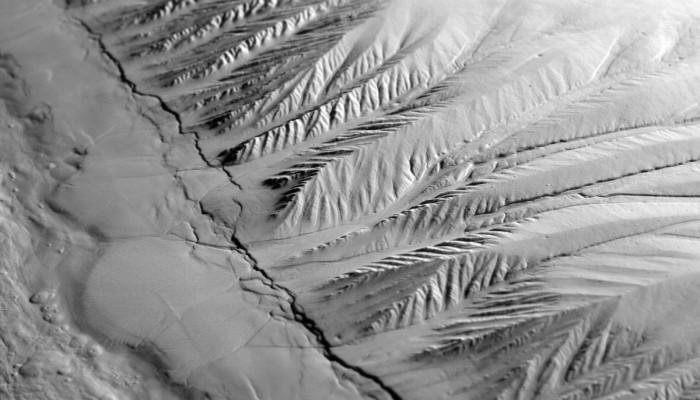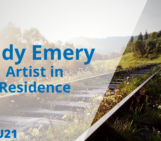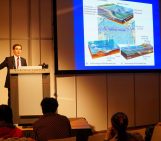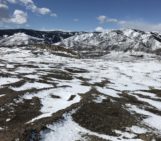
Many of the processes which take place on Earth happen over very long time scales, certainly when compared to the life span of a person. The same is true for geographical scale. Many of the processes which dominate how our planet behaves are difficult to visualise given the vast distances (and depths) over which they occur.
To overcome this difficulty, scientists have developed and resorted to a number of tools; from geological mapping right through to generating computer models. One such tool dates back some two centuries: analogue experiments. Initially they started off as roughly scaled experiments to test a range of hypothesis. Famously, James Hutton used analogue models to prove that the folding of originally horizontal strata is the result of lateral compression. With time they have become increasingly sophisticated, allowing researchers to replicate a vast range of conditions and environments which lead to a better understanding of how our planet works.
Today’s Imaggeo on Monday’s image, by Stephane Dominguez, a researcher Chargé de Recherche CNRS, in Montpellier, shows the final evolution stage of an analog experiment dedicated to the study of Relief Dynamics – how surface topography comes to be – and what role tectonics, erosion and sedimentation play in the formation of landscapes. In such experiments, typical scaling is 1cm = a few hundred meters and 1s = a few tens of years.
In this particular experiment “we used a specific granular material mixture (made of water saturated silica, microbeads, PVC and graphite powders, to simulate a portion of the upper terrestrial crust submitted to tectonic extension (where the crust is being stretched, such as at, but not limited to, continental rifts and divergent plate boundries),”explains Stephane.
At the same time, the research team used a rainfall system to project micro water droplets on the model surface. This causes water runoff to initiate and starts the growing reliefs to be eroded.
“We obtain a very realistic morphology that continuously evolves in response to complex interactions between surface deformation (induced by normal fault activity – caused by the stretching of the crust) and surface processes (erosion, sediment transport and deposition).”
References
Ranalli, G.: Experimental tectonics: from Sir James Hall to the present, Journal of Geodynamics, 32, 65-76.
Imaggeo is the EGU’s online open access geosciences image repository. All geoscientists (and others) can submit their photographs and videos to this repository and, since it is open access, these images can be used for free by scientists for their presentations or publications, by educators and the general public, and some images can even be used freely for commercial purposes. Photographers also retain full rights of use, as Imaggeo images are licensed and distributed by the EGU under a Creative Commons licence. Submit your photos at http://imaggeo.egu.eu/upload/.





Pingback: Recreating geological processes in the lab | Ge...
Stephane Dominguez
Hi,
And for those interested in analog and numerical modeling applied to Geosciences, don’t miss the next GEOMOD meeting ;-> !
GEOMOD 2016 will be sponsored by the EGU and will take place in the city of La Grande-Motte, near Montpellier, South of France from October 17th to October 20th, 2016.
http://geomod2016.gm.univ-montp2.fr/News_Info.html